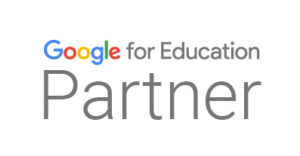As India braces for record-breaking temperatures, schools across the country are facing an unexpected crisis. The extreme heat around the globe is disrupting regular learning. While summer vacations offer temporary relief, long-term educational continuity now depends on smarter, more flexible solutions. This is where active tech-based learning comes in leading the charge.
Understanding Active Tech-Based Learning Systems
Active tech-based learning refers to the use of digital tools and platforms that enable students to participate, collaborate, and engage in real-time or self-paced learning. Here’s a quick snapshot of the different learning models schools are using today –
- Online Learning – Fully virtual. Accessible anytime, anywhere. But it lacks peer interaction and classroom bonding.
- Blended Learning – Mix of online modules and occasional physical classes. It still leans towards traditional formats.
- Hybrid Learning – A balanced approach. Teachers and students interact both online and offline. The format adjusts as needed—ideal during disruptions like heatwaves.
- Flipped Classrooms – Students learn new concepts online at home and practice them in school under guidance.
- Virtual Classrooms with VDI – Provides schools with secure, centralized virtual systems, enabling students and staff to access educational resources and applications seamlessly from any device, from anywhere.
- Learning Management Systems (LMS) – Central platforms to track assignments, grades, resources, and feedback.
Each system serves a purpose. But hybrid learning model is especially designed for flexibility when schools are forced to shut their doors.
Why Hybrid Learning Matters More This Summer?
With the Indian Meteorological Department warning of prolonged heatwaves this year, several states are considering early summer breaks and restricted school timings. In cities like Delhi and Noida, temperatures have already crossed 45°C. This impacts not only attendance but also academic progression.
Many schools are switching to hybrid learning due to heatwaves, creating digital extensions of their classrooms. This shift has proved to be essential.
Online Learning vs Hybrid Learning
While online learning solves the location barrier, it often creates gaps in communication, discipline, and inclusivity. Hybrid learning, on the other hand, combines the best of both worlds, which includes live teaching and digital support. It offers inclusive learning environments, supporting students with different learning needs, home situations, or health concerns.
Blended Learning vs Hybrid Learning
Blended learning often includes a fixed mix of tech-enable resources and offline content, mostly pre-decided. Hybrid learning is dynamic. In the event of a school closure or sudden weather advisory, a well-equipped online learning system enables a seamless transition, ensuring uninterrupted education for students.
The Heatwave Urgency – Learning Can’t Wait
School leaders are now asking a crucial question ‘How do we maintain learning when stepping outside is unsafe?’ The answer lies in hybrid education, powered by smart infrastructure.
Here’s what it reveals –
- Continuity – Learning never stops, even during climate-related closures.
- Safety – Students learn in comfortable spaces, it could be home or school
- Preparedness – Schools become future-ready for emergencies and seasonal disruptions.
According to a UNESCO report, over 23 crore students in India were affected during previous weather-related school closures. The risk is too big to ignore now.
But What About Hybrid Education Challenges and Problems?
Yes, the shift to active tech-based learning comes with hurdles such as device access, teacher training, content readiness. But these can be solved with the right tech partners. Solutions for schools are now more accessible and scalable than ever before.
The current heatwave is an environmental crisis along with an educational one. Schools that adopt hybrid learning today are not just reacting, they’re leading. They’re choosing inclusive, safe, and uninterrupted learning for their students.
Let’s not wait for academic decline to become the next headline. Let’s act before our classrooms go quiet again.




 1st Floor, H-31, Sector 63,
1st Floor, H-31, Sector 63,